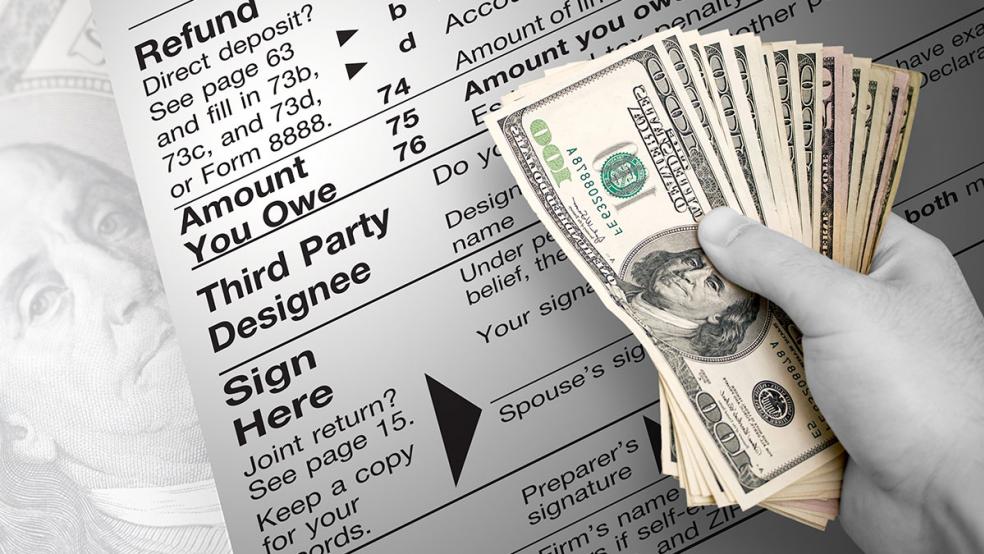Many Americans cross their fingers at tax time, hoping for a huge refund from the federal government. At the very least, they want to break even. The vast majority of filers — more than 70 percent — do get money back from the government, with the average refund close to $3,000, according to the IRS. But every year, some taxpayers get a nasty surprise: They owe Uncle Sam hundreds or even thousands of dollars that they didn’t budget for.
How can that be?
Simply put, if you owe a large sum in taxes, it’s likely because you kept too much of your paycheck during the year and had too little withheld automatically. If you owe more than $1,000, you also have to pay a penalty to the IRS.
Related: The Best and Worst States for Taxes in 2017
This can come as a big shock to people who have had the same withholding as the year before, but didn’t end up owing money previously. “Any time you have a major life change such as getting married, having a child, retiring or starting a new job, you should re-evaluate your tax situation and update your withholding,” says Jackie Perlman, principal tax research analyst at The Tax Institute at H&R Block.
The three changes below could result in an unexpected tax hit.
Increasing income: Did you go from being a one-income family to a dual-income family? Did one spouse get a promotion, large raise or bonus? If your household income increased but you didn’t take any additional deductions or exemptions versus the prior year, that could make your tax withholding too low, says Lisa Lewis, CPA and TurboTax expert.
Related: 7 Common Tax Mistakes That Could Cost You Thousands
Fluctuating income: Similarly, if your income fluctuates throughout the year — either because you’re self-employed or you rely on investment income — maybe you didn’t realize exactly how much income you have coming in and didn’t withhold enough. In that case, “you should consider doing a quarterly check on your potential tax return to adjust withholdings or make estimated payments,” says Mark Steber, chief tax officer of Jackson Hewitt.
One-time event: It’s also possible that your tax liability was triggered by a unique event such as large capital gain from a property sale, says Perlman. That means you may not need to adjust your withholding. Instead consider paying estimated tax if you sell property or receive income from an unexpected source, Perlman says.
If you do need to change your tax withholding, figure out by how much. The IRS and other tax professionals offer an online W-4 withholding calculator to help determine your appropriate strategy.
Related: Scammers Have a New Trick to Get Your W-2 Form
Once you know that, request a Form W-4 from your employer to adjust your withholdings. Self-employed workers — who make quarterly estimated payments to the IRS — use Form 1040-ES. Retirees need to complete Form W-4P for pensions and annuities, Form W-4V for Social Security and railroad retirement or Form W-4 for military retirement. Return the form to the payer.
“If you are married and both you and your spouse work,” Perlman says, “you’ll get the best results if you coordinate with your spouse.”





